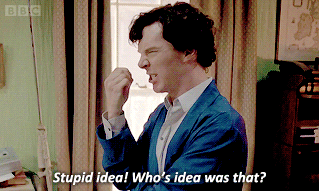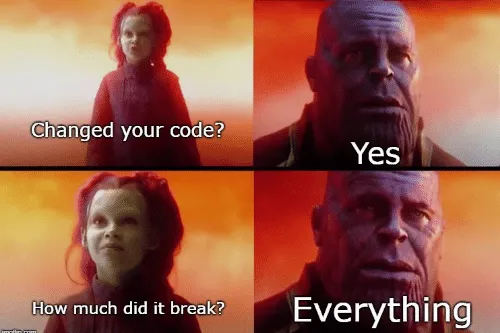In 1985, McDonald’s decided to make a bold move – they introduced a new burger (🍔) in brand new packaging. They believed the new recipe would be even better than the original. But to their surprise, customers were outraged and started boycotting Mcdonald’s! The situation was so dire that McDonald’s had to backtrack on their decision. What went wrong? It all comes down to a simple yet powerful thinking tool – Chesterton’s Fence.
Understanding Chesterton’s Fence
Chesterton’s Fence thinking tool, named after the famous English writer G.K. Chesterton, advises against making any reforms until you understand the reasoning behind the existing state of affairs1Chesterton wrote in his 1929 book, The Thing. This principle doesn’t only apply to businesses but to all professionals.
Put simply, don’t take a fence down unless you know why it was put up.

The principle serves as a reminder that those who made decisions before us might have had good reasons for doing so. Until we know why they made that decision, it’s not safe to change it or conclude that they were wrong. We need to observe the system in full and learn how it works before proposing any changes.
The first step before modifying an aspect of a system is to understand it. Observe it in full. Note how it interconnects with other aspects, including ones that might not be linked to you personally. Learn how it works, and then propose your change.
Shane Parrish
McDonald’s Big Mistake
In the 1980s, McDonald’s (🍔) tried to introduce a new menu item called the McDLT2Here’s why the McDLT was cancelled. The burger was meant to appeal to customers’ growing desire for fresher and healthier food options. The burger came in a two-sided styrofoam container, with the hot ingredients on one side and the cold ingredients on the other. The company thought this would be a game-changer, but the new menu item turned out to be a massive failure.
McDonald’s failed to understand that customers didn’t want to pay more for a burger that required them to assemble it themselves. Additionally, the styrofoam container was deemed environmentally unfriendly. This blunder cost the company millions of dollars and a significant loss of customer trust.

If McDonald’s had followed Chesterton’s Fence principle, the loss could have been avoided. McDonald’s should have taken the time to understand their customers’ needs and preferences, and why the existing packaging was used in the first place3Here’s an article on why the paper is used as packaging material for burgers. McDonald’s should have considered Chesterton’s Fence and researched this article!, and if any other options could have been used. By applying Chesterton’s Fence principle, McDonald’s could have avoided this costly mistake and continued to maintain their customers’ trust.
Do not think of knocking out another person’s brain because he differs in opinion from you. It would be as rational to knock yourself on the head because you differ from yourself ten years ago.
Horace Mann
Well, that’s a good story. But how does Chesterton’s Fence apply in real life? How can you use this thinking tool? 🤔
Real-World Applications of Chesterton’s Fence in Decision-Making
In a study published in the Journal of Management, the researchers found that “the most effective change is that which emerges from a careful consideration of the existing system”4Errida A, Lotfi B. The determinants of organizational change management success: Literature review and case study. International Journal of Engineering Business Management. 2021;13 https://journals.sagepub.com/doi/full/10.1177/18479790211016273.
The study recommends that managers must first understand the current system and its logic before trying to change it.
Chesterton’s Fence can apply to any system, be it business, government, education, or personal life. Here are a few more examples to illustrate how this principle works:
👩🏻💻 In software development, before making any changes to a codebase, developers first analyze the existing code to ensure they don’t break any existing functionality or create new bugs. There’s a saying in software engineering which relates to Chesterton’s Fence, don’t change code that you don’t understand. Why?

🌇 In urban planning, before building new infrastructure, planners consider existing traffic patterns, zoning laws, and community feedback to avoid disrupting the status quo.
💉 In medicine, before prescribing new treatments, doctors review a patient’s medical history and current medications to avoid harmful drug interactions.
💼 Policy-makers should consider previous the policy was set up in a particular way before making any changes.
Second-Order Thinking and Chesterton’s Fence should be used to complement 🫱🏻🫲🏽 each other.
Chesterton’s Fence vs. Second-Order Thinking
Chesterton’s Fence advises against making changes to an existing system or practices until you understand why it exists in the first place. It is a principle that reminds us to be humble and recognize that previous generations had good reasons for the decisions they made. We should take the time to learn from the past and understand the reasoning behind existing systems before proposing changes.
On the other hand, Second-Order Thinking involves thinking beyond the immediate effects of a decision and considering its potential long-term consequences. It is a way of thinking that helps us avoid unintended consequences and make more informed decisions.
While Chesterton’s Fence focuses on understanding the reasoning behind existing systems before making changes, Second-Order Thinking focuses on anticipating the potential consequences of a decision before taking action.
Chesterton’s Fence asks “and why is it done that way?” whereas Second-Order thinking asks “and then what?”

Strategies for Understanding Existing Systems
Understanding an existing system can be challenging, especially if you’re new to it. Here are a few tips to help you get started:
👨🏻🔬 Research: Read existing documentation, reports, and articles to get an overview of the system and its history.
🧐 Observe: Spend time observing the system in action. Note how it interconnects with other aspects and how it responds to changes.
🙋🏽♂️ Ask questions: Talk to people who work with the system, including stakeholders, experts, and users. Ask them why certain decisions (here’s another decision-making system, Regret Minimization) were made and how the system works.
🧪 Test assumptions: Challenge your assumptions about the system by testing them with data or real-world scenarios.
💡 Embrace complexity: Recognize that most systems are complex and have many interconnected parts. Embrace this complexity and use it to your advantage by identifying potential areas for improvement.
By following these strategies, you can gain a deeper understanding of existing systems and propose informed changes that are more likely to succeed.
Chesterton’s Fence – Ask Questions Before You Change Things
As intellectual explorers, it’s essential to be curious which inadvertently leads to breaking things.
Chesterton’s Fence dictates asking questions before making any changes to existing systems. It reminds us to seek understanding and avoid the trap of assuming that our solutions are better than the ones that came before. By taking the time to learn from the past and understand the reasoning behind existing systems and decisions, we can avoid mistakes and make informed decisions for a better future.
So, the next time you’re tempted to make changes to a system you don’t fully understand, ask yourself: “Do I really know why this fence was put up in the first place?”
Footnotes:
- 1Chesterton wrote in his 1929 book, The Thing
- 2Here’s why the McDLT was cancelled
- 3Here’s an article on why the paper is used as packaging material for burgers. McDonald’s should have considered Chesterton’s Fence and researched this article!
- 4Errida A, Lotfi B. The determinants of organizational change management success: Literature review and case study. International Journal of Engineering Business Management. 2021;13 https://journals.sagepub.com/doi/full/10.1177/18479790211016273




